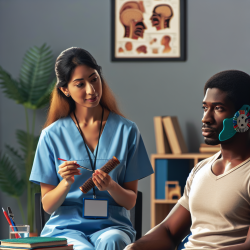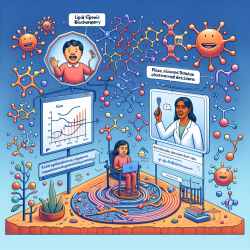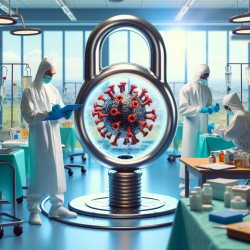Introduction
In the field of speech-language pathology, the ability to provide accurate and consistent tactile-kinesthetic-proprioceptive (TKP) inputs is vital for effective intervention, especially for children with speech sound disorders (SSDs). A recent pilot study, "Measuring and Training Speech-Language Pathologists' Orofacial Cueing: A Pilot Demonstration," provides valuable insights into how speech-language pathologists (S-LPs) can enhance their skills in this area.
Understanding the Research
The study focused on the use of kinematic measures to assess the skill levels of S-LPs in providing TKP cues. It involved three S-LPs with varying levels of experience and a model participant to measure the accuracy and consistency of the TKP inputs. The study utilized advanced techniques such as Generalised Orthogonal Procrustes Analysis (GPA) and cyclic Spatial Temporal Index (cSTI) to evaluate the movements.
Key Findings
- Accuracy of Jaw Movements: Experienced S-LPs were able to induce passive jaw movements that closely matched the model participant's active movements, highlighting the importance of experience in achieving accuracy.
- Consistency in Hand Movements: More experienced S-LPs demonstrated lower variability in their hand movements, as indicated by GPA analysis, suggesting a higher level of motor control and precision.
- Consistency of Induced Movements: The cSTI values showed that experienced S-LPs induced more consistent orofacial movements, crucial for effective speech therapy.
Implications for Practice
The findings suggest that kinematic measures can be effectively used to assess and improve the skill levels of S-LPs in providing TKP cues. This has significant implications for training and treatment fidelity in speech therapy. By focusing on these objective measures, practitioners can enhance their ability to deliver effective interventions, ultimately leading to better outcomes for children with SSDs.
Encouraging Further Research
While the study provides a strong foundation, further research is needed to explore the application of these measures in clinical settings and with diverse populations. S-LPs are encouraged to engage in continuous learning and research to refine their skills and contribute to the advancement of the field.
To read the original research paper, please follow this link: Measuring and Training Speech-Language Pathologists' Orofacial Cueing: A Pilot Demonstration.










